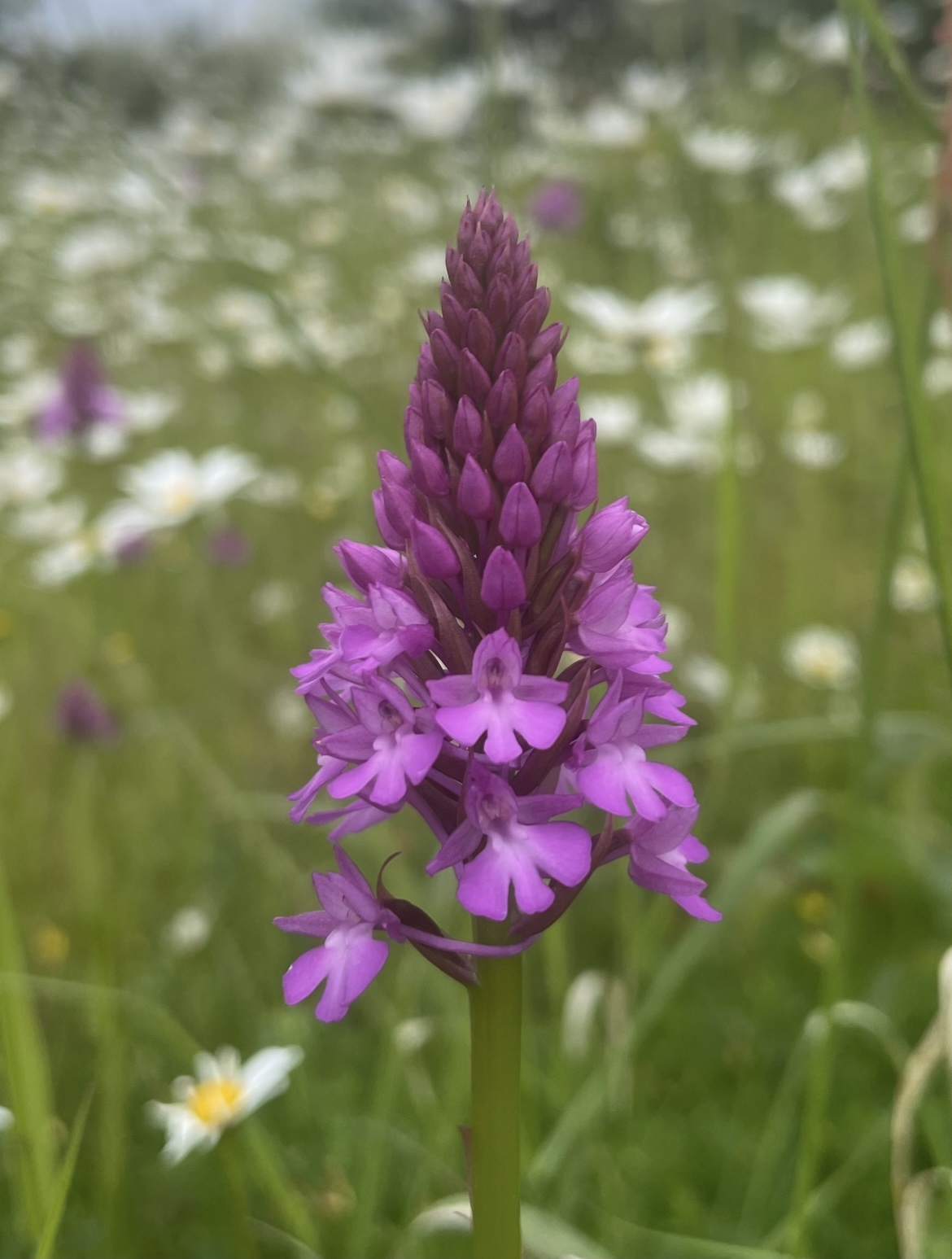The Pyramidal Orchid (Anacamptis pyramidalis) is a striking and iconic wildflower species native to the United Kingdom, belonging to the Orchidaceae family. Renowned for its vibrant pink to purple flowers arranged in a distinctive pyramidal shape, this orchid is a cherished sight in meadows, grasslands, and coastal habitats across the UK.
Pyramidal Orchids are commonly found in a variety of grassland habitats, including calcareous grasslands, sand dunes, and roadside verges. They prefer well-drained, nutrient-poor soils and thrive in areas with plenty of sunlight.
As a flowering plant, Pyramidal Orchids rely on specific pollinators, including bees, butterflies, and moths, to transfer pollen between flowers. Their nectar-rich flowers attract pollinators, contributing to the overall biodiversity of their habitat.
Behaviourally, Pyramidal Orchids typically bloom from late spring to early summer, with individual flowers lasting for several weeks. They form dense colonies in favourable habitats, often creating a stunning display of colour in grasslands and meadows.
With a relatively short lifespan, Pyramidal Orchids are perennial plants, persisting for multiple years. They reproduce both by seed and by forming underground tubers, which allow them to survive adverse conditions and reemerge in subsequent years.
Culturally, Pyramidal Orchids have inspired artists, poets, and nature enthusiasts throughout history. Their striking appearance and delicate beauty symbolise the resilience and fragility of nature, making them a beloved subject in literature, art, and conservation efforts.
An interesting fact about Pyramidal Orchids is their complex relationship with mycorrhizal fungi in the soil. These fungi form symbiotic associations with the orchid’s roots, assisting with nutrient uptake and contributing to the orchid’s ability to thrive in nutrient-poor soils.


